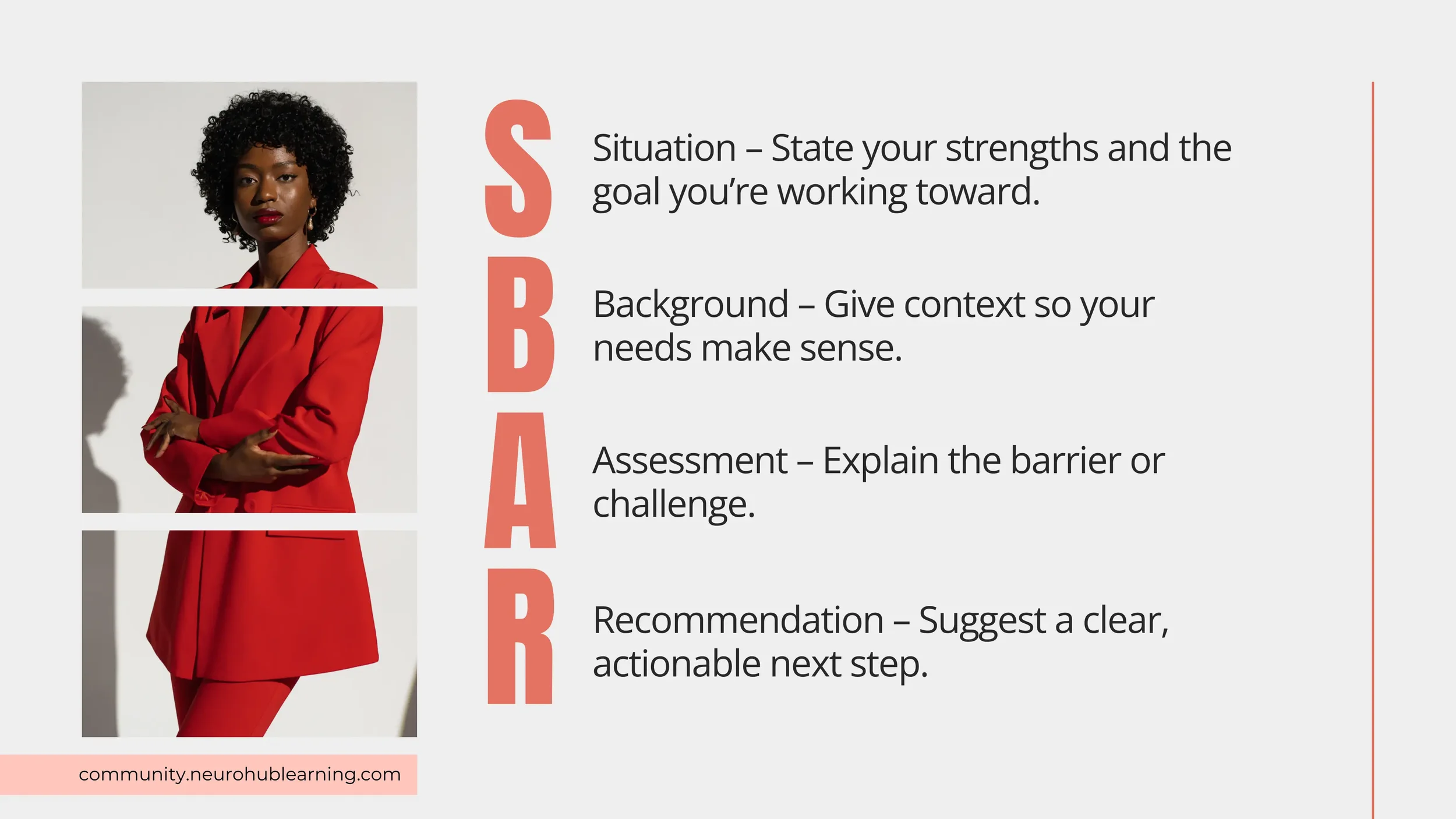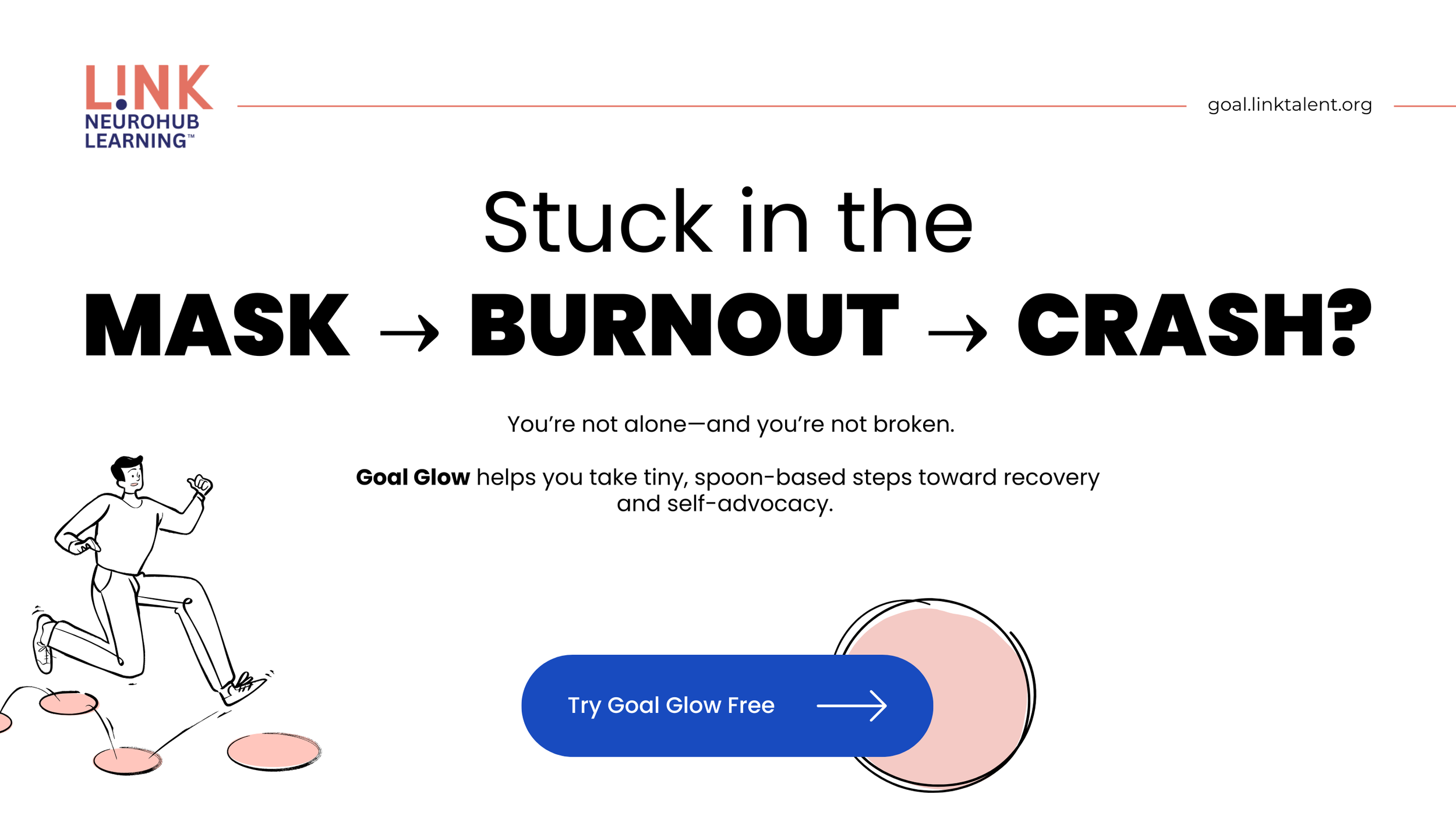Advocacy in Action: Strengths-First SBAR Scripts
Self-advocacy can be hard — especially if you’ve spent your life seeing (and being told) your needs are a deficit. It may feel unnatural to “frame yourself up” when you’ve been conditioned to expect judgment. But here’s the truth: explaining what works well for you gets people to listen and collaborate far more than leading with what you can’t do. A strengths-first approach keeps you out of the trap of talking yourself down.
Each month, we share an Advocacy in Action script using the SBAR format:
Situation – State your strengths and the goal you’re working toward.
Background – Give context so your needs make sense.
Assessment – Explain the barrier or challenge.
Recommendation – Suggest a clear, actionable next step.
These examples are starting points — adapt them to your own style and keep the focus on your strengths so you’re seen as capable, proactive, and solutions-minded.
Sample advocacy scenario: Sensory-Friendly Space Request
S – “I’m most productive and engaged when my environment supports focus and reduces distractions.”
B – “In busy or noisy settings, I can lose a significant amount of energy managing sensory overload.”
A – “This environment makes it harder to sustain attention for detailed or creative work.”
R – “Could we arrange a quieter space or allow me to use noise-canceling headphones for certain tasks or study sessions?”


